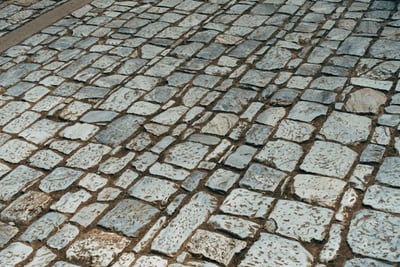[Here is the second in my new back catalogue series of postings. This simple prose poem was written around 1989. The greatest influence upon me in the late 1980s and early 1990s was the prose poetry of the French post-surrealist poet Francis Ponge, some of whose works I translated at about the same time. But my work also reflected my interest in modern and contemporary art, about which I wrote as part of my job at a publishing company.]
#2 The Pavement (1990)
Photo by Markus Winkler on Unsplash
As a child, being closer to it, I was able to undertake a more scrupulous examination of the pavement.
The pavement is a flat, unique landscape of irregular cracks and cambers strewn with grit and dust. Like magnetic tape it illegibly makes record of all activities—performed by shoes or rain—that have ever impinged upon it. The gaudy bright black tarmac has grown grey smooth uniform.
The pavement is a particular type of rock that is deposited in parallel strata along the roadsides. Intermittent manholes or gas mains remind us of the subterranean utilities. It is a type of rock exposed to the vicissitudes of time, but it is also a machine that works.
Robust plants and dusty grasses, which, because they are not flimsy and sensitive to weather or rough treatment, we are rude enough to call weeds, cause and exploit its fractured crust. Pavement falls into disrepair more quickly than rubber, metal or plastic. Although technically artificial, it is accepted as part of the ground; not exactly used. Still less scrutinized. As adults, we are inclined to trip less often, and, therefore, are wholly disoriented when we find ourselves fallen, nose to nose, with this parallel, Lilliputian lower world.
All the slightest imperfections in the pavement are marked with small pools or fluvial systems by the unerring flow of rainwater.
I dare not wish to copy the pavement as accurately as this rain. I would lose my wits to its miniature microcosm. But, if I were responsible for the day-to-day maintenance of the city pavements, I would order detailed annual photographic records, in full color, to be kept of each stretch. These would then be bound in huge volumes, made accessible to the general public for inspection and contemplation in local libraries.
The pavement is no mundane convenience; it is a world in its own right. A lesson to be learnt. Worth scrutinizing.
